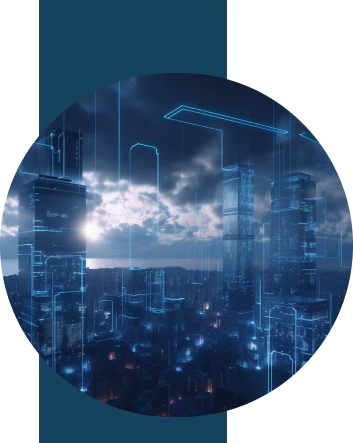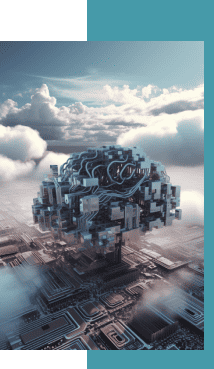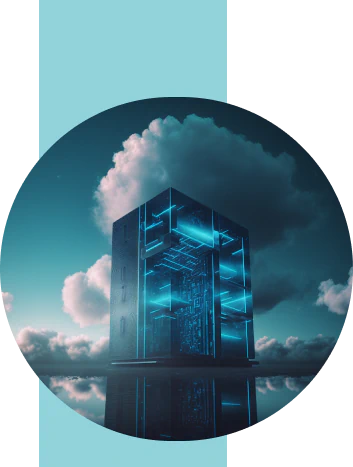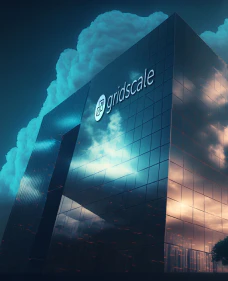
Edge Computing at a glance
What IT managers in SMEs should know about the architecture paradigm
As part of the gridscale analysis series “Between heaven and earth”, Dr. Andreas Stiehler and Henrik Hasenkamp take an in-depth look at edge computing and its relevance for German SMEs. In the following article, they provide concise answers to the ten most crucial questions related to the subject.
1. What is Edge Computing?
In short, Edge Computing refers to a distributed architecture that aims to bring computing, storage or network performance close to the places where data is generated and applications are needed – i.e. to the edge of the network.
This idea is not new. Precursors or application or provider-specific approaches based on a similar basic idea include fog computing, content delivery networks (CDN), cloudlets, mobile device clouds, intelligent transport systems clouds (ITS clouds) and VANET (Vehicular Ad Hoc NETworks) clouds. In the end, Edge Computing has solidified its position as a comprehensive decentralized architectural paradigm recognized by experts.
We have described the principle and functionality of Edge Computing in more detail here.


2. What advantages does the new architecture paradigm offer?
Compared to centralized architecture approaches, Edge Computing offers four key advantages: short latency times, lower bandwidth requirements, lower costs and greater control (in terms of security and data protection). These advantages come into play to varying degrees depending on the application area and location. They are particularly pronounced in bandwidth-intensive and latency-sensitive applications and application locations with low network coverage.
3. How does Edge relate to Cloud Computing?
First things first: Edge Computing will not replace Cloud Computing! Rather, both architecture models complement each other. As a result, Edge Computing expands the range of possibilities for the design of IT architecture. In this context, we also speak of an edge-cloud continuum from which companies can draw when implementing application scenarios. In fact, many innovative use cases today are based on hybrid architectures – i.e. a mix of edge and cloud infrastructures with varying degrees of intensity.


4. Why is Edge Computing currently gaining in importance?
In essence, there are four factors that are currently driving the development of the topic:
- Progressive cloudification of the IT application landscape, which means that the risks of the cloud model are also increasing or becoming more apparent;
- Increasing scarcity of resources (skilled workers, energy), which encourages the realization of innovative edge-based application scenarios;
- Rapidly advancing technology development and maturity, including in edge hardware, but also with regard to GPU capacities, cloud-native technologies and concepts, network expansion (5G) and, of course, in the AI environment.
- Marketable edge offerings from leading cloud, hardware and telecommunications providers as well as a growing number of local players with offerings for SMEs.
5. What should be considered when planning an Edge architecture?
Essentially three things:
- Firstly, Edge architecture planning should always be based on the specific use case. The first step is therefore to analyze the business requirements and identify relevant use cases and the workloads required for them.
- Secondly, the choice of an Edge architecture model should be preceded by a comprehensive weighing-up decision, with cloud computing as the benchmark.
- Thirdly, it is important to select the right architecture mix for the respective use case from the wide range of options within the cloud edge continuum.


6. Is there a framework that companies can use as a basis for planning Edge applications?
In fact, various (supposed) Edge architecture models are currently being discussed by different provider groups, but on closer inspection these prove to be of little help due to the provider-centric perspective.
In contrast, we recommend the Linux Foundation’s Edge Computing Framework as a neutral approach that is helpful in practice. Based on the distinction between User Edge, Service Provider Edge and Cloud Edge, it focuses on the entire Cloud Edge Continuum. The resulting discussion of the characteristics of various computing options within this spectrum provides a well-founded basis for making the trade-offs associated with the specification of the architecture model.
7. How common is the use of Edge Computing in Germany?
The estimates and forecasts of leading analyst firms point to dynamic growth in this segment – starting from a comparatively low level. For providers of special edge solutions, such as the server manufacturer Thomas-Krenn AG, this momentum is already reflected in sales revenue. Overall, however, the implementation of innovative edge-based application scenarios is still in the early stages in Germany.


8. Which application scenarios are already being implemented in German SMEs?
On the one hand, edge components have been implemented in many hybrid cloud solutions in SMEs for years. However, more as a stopgap when cloud migration is not possible. On the other hand, we are seeing more and more innovative application scenarios that would have been unthinkable a few years ago – when edge technologies were less mature and digital transformation was still in its infancy in many companies.
Examples of this are:
- Intelligent shelving systems in retail
- Software distribution in the automotive industry
- Monitoring of fish ladders, beehives and vineyards
- Herd management in agriculture
- Maintenance of drilling rigs (and many other machines)
- Smart metering in the energy industry
9. What needs to be considered when implementing Edge Computing in practice?
Edge Computing is not an end in itself. It should be based on a strategy that takes into account the company’s specific needs and is based on well-founded considerations regarding the choice of computing model. Secondly, Edge Computing requires smooth interaction between different components and services. The relevant providers and service providers should therefore be brought on board at the planning stage.


10. Which providers should be considered as solution partners for the implementation of Edge application scenarios?
The realization of innovative edge-based application scenarios is not a mass business, but rather small-scale, multi-layered and highly individual. Large, globally positioned providers tend to struggle in such an environment – especially when it comes to supporting SME customers. It is therefore worth looking for solution partners in this area who can address the needs of medium-sized companies and operate profitably with smaller quantities.
Want to dive even deeper into the topic? The three reports from the gridscale series “Between heaven and earth” offer detailed explanations of the relevance of edge computing for German SMEs, including helpful illustrations, expert views and available market figures.
- Part 1 (Intro) introduces the edge computing concept and its special features. We show why the topic is moving onto the agenda right now and discuss in detail how edge and cloud computing interact.
- Part 2 (Architecture) deals with questions relating to the selection and planning of edge architectures. We present the Linux Foundation framework as a helpful basis for architecture planning and discuss its possible applications.
- Part 3 (practice) will finally examine the role the topic currently plays in German SMEs and which edge application scenarios are already being implemented. This is based on the evaluation of analyst assessments and studies as well as in-depth interviews with two experts who have extensive experience in the implementation of edge-based solutions in SMEs.
